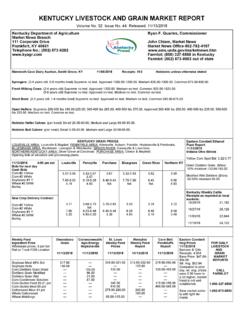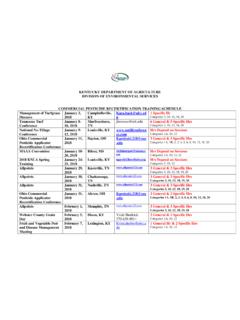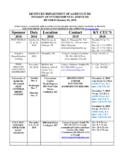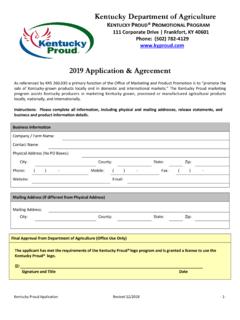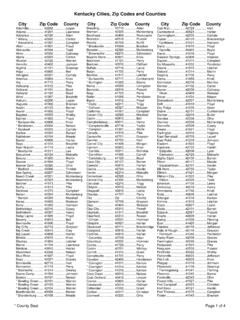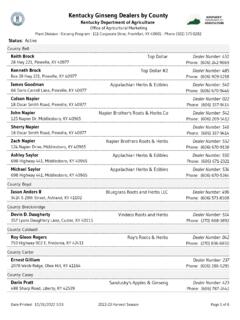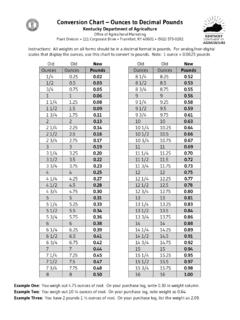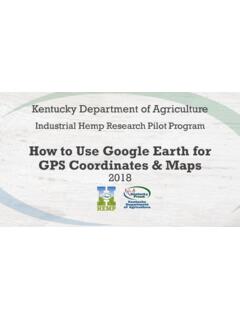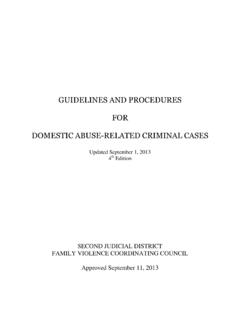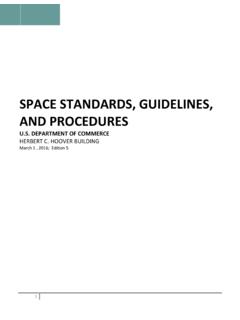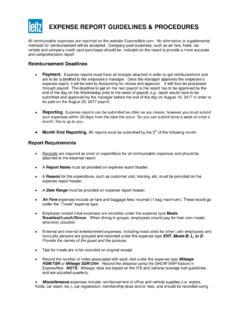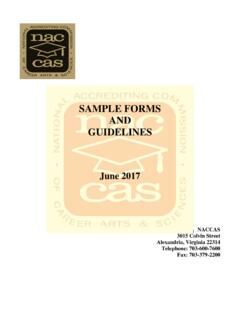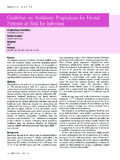Transcription of Food Sampling Guidelines and Procedures - ky agr
1 food Sampling Guidelines and Procedures Farmers markets sell primarily on taste. Allowing a customer to try a new product prior to buying can be a tremendous marketing tool for producers. Care should always be taken to ensure each sample is of the highest quality and will be a positive experience for the consumer. Adherence to food safety principles is of great importance when offering samples. Foodborne illness resulting from improper Sampling methods could create a negative image of the producer or the farmers market in general.
2 It s important to note that the vendor offering samples assumes all liability and should look carefully at every step to make sure their samples are as safe as possible. A sample is defined by the Department for Public Health as a food product promotion where only a bite-sized potion of a food or foods is offered free of charge to demonstrate its characteristics. A whole meal, individual hot dish or whole sandwich is not recognized as a sample. There are two broad categories of samples allowed: those that are cooked or processed, and those that are raw or unprocessed.
3 Cooked or Processed Sampling Certificate In order for processed and cooked products to be sampled at the farmers market, a producer must: read through the Sampling chapters in the Farmers Market Manual complete the KDA Farmers Market Sampling Application submit completed application to the KDA office No formal classroom training is required. Once the Application has been reviewed and approved, the Sampling certificate will be issued. This certificate must be on display at the markets when samples are being offered.
4 All Samples Certificate If the producer wishes to offer samples of raw or uncooked products they must complete the Good Agricultural Practices (GAP) Training class and the KDA Farmers Market Sampling Application. The University of Kentucky County Extension Agents will be utilized as the instructors for the GAP Training classes. The instructors will be responsible for submitting a list of class participants full names and mailing addresses after the class has been completed. This should be sent to the KDA office immediately following the class.
5 Once the required GAP training has been completed and the Sampling Application has been reviewed and approved, the All Samples Certificate will be issued by the KDA office. This certificate must be on display at the markets when samples are being offered. Here are a few points about both types of Sampling certificates: Sampling Certificates are valid for a two year period; this coincides with updating of the KDA Farmers Market Manual. The Sampling certificates will only be issued for an individual. This means the person listed on the certificate will be the only person to offer samples.
6 Employees, family members, etc. must complete their own Sampling Application and receive their own certificate if they intend to offer samples at the market. GAP Diplomas, however, are not required of employees, family members etc. so long as the farm operation has at least one GAP diploma on record. When sending in the Sampling Application for an All Samples Certificate (raw and uncooked products) you must write the name of the person whose GAP Diploma you will be Sampling under. If a producer moves or expands to another market they MUST contact KDA so the new changes are on file and a new Sampling certificate can be issued.
7 The Sampling certificate must have the names of all the markets where samples will be offered. Preparation of Samples Some farmers choose to prepare their samples at home where the quality of water, cleanliness of surfaces and equipment and cleanliness of vegetables can be easily controlled. The samples may be washed, cut up and placed in disposable, individual cups with lids. These cups are available at any restaurant supply store or at large outlet stores. Whether you prepare your samples at the market or at home you must provide equipment and maintain practices that ensure the following during sample preparation: Potable water All water that touches your product or your utensils MUST be potable.
8 If the water is from a well, cistern, or other non-municipal source it must then be tested and the records retained. Documented test results prove the water is potable, not previous use as drinking water. Clean produce All raw produce MUST be washed thoroughly with running potable water. The water has to be running to carry away any dirt or contaminants that may be on the outside of the product. For example, you cannot wash your tomatoes in a bucket of clean water. Produce with rinds pose a special problem. Cantaloupes and muskmelons need a good scrubbing to remove all dirt.
9 This can be done at home to all the produce you plan to use for samples. Make sure the washed produce is then packed in clean bags or containers to keep them clean; and then store them separately from unwashed items until you arrive at the market. Approved Ingredients All products used in your samples must come from an approved source. This means all agricultural products that will be served without cooking must have been raised according to Good Agricultural Practices (GAP) and any value-added product must be commercially produced or produced under the Home-based Processing/Microprocessing program.
10 Clean hands You must wash your hands properly before touching any part of your samples. Hand sanitizers do not substitute for proper hand washing. Gloves do not substitute for proper hand washing. Always wash your hands before putting on gloves and after taking them off. If gloves become torn, ripped or contaminated they should be changed. Never reuse gloves. Though we have all washed our hands since childhood, the proper way for sanitation purposes includes the following: Wetting your hands Applying liquid soap Briskly rubbing your hands together including fingernails and backs of hands for a minimum of 20 seconds (a long time!)
